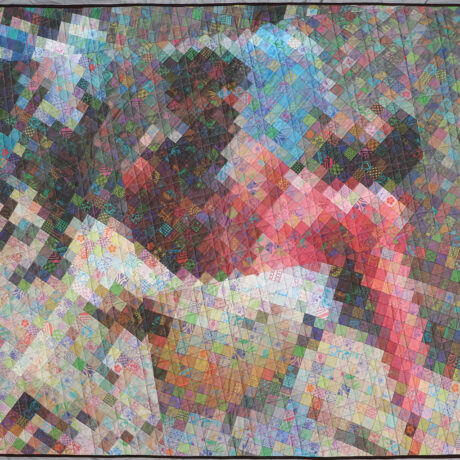Why I Invest in Ethical Fashion
When people ask why I invest in Ethical Fashion, that is companies that treat workers well and try to minimize their impact on the environment, I often make comparisons to the organic foods movement.
In the mid-90s the organic food industry, still a niche market, sought to break into the mainstream. At the time, though, consumers had little understanding of “organic.” Over the years growing concern about health issues, pesticides, potential risks of genetically modified food, environmental damage resulting from industrial farming, and animal rights has pushed interest in organic food to the forefront of public consciousness. Organic food may cost a little more money than processed industrial food, but people now understand that saving a few cents can have enormous costs for their health, the environment, and the wellbeing of workers.
As organic food continues to define a new standard, older brands are redefined. Because new “organic” foods intersect with so many issues, an old-fashioned product is not only “NOT organic,” but also “NOT green,” “NOT ethically sourced,” “NOT fairly traded” and so on. The cumulative effect can break consumer habits. I like New York City street hot dog vendors as comfort food. Still, I am inclined to steer my children into a restaurant with a big blue health-department-certified “A” in the window.
I’m not being ideological when I do this. I am simply operating with more readily available information than existed before. This is not about niche marketing around someone’s pet concern. It’s about a new generation of products rewriting the rules of quality for a new generation of consumers.
Green businesses savvy enough to detect the change in public awareness have proven successful at convincing consumers of the value of buying organic and have driven the supermarket chains and even fast food industry to join the organic food movement. Certainly a lot of “green washing,” false advertising, occurs, but over time brands that deliver more than image will gain position in the market.
Well, when it comes to fashion, I would argue that what we put on our bodies is as important as what we put in them. A public that has begun to exercise their consumer leverage to force organic food into the mainstream marketplace will increasingly demand ethical options from the clothing industry.
As the Ethical Fashion movement educates consumers, people become more aware of the dangers of industrial chemicals in their clothing, of environmental damages from some mainstream industrial practices, and of the unsafe working conditions and inferior quality associated with the “race to the bottom” phenomenon. As they have with organic food, people will develop a holistic approach to the idea of quality. Status, value, workmanship, ethics, environmental and humanitarian concerns all become synonymous with quality. Consumers don’t make separate deliberations for each category. They make one decision. The more people who make the choice to support Ethical Fashion, the more such choices will become the standard.
If we want a significant number of people to choose the ethical fashion alternative, two things have to happen. The fashion and garment industry needs to offer ethically sourced clothing to the marketplace at a reasonable price, and the producers and retailers have to be able to make money investing in ethical fashion. The goal is to offer a high quality product at competitive prices, without asking consumers to pay a big premium for the responsible aspects of the brand. Otherwise you are limited to a small market of highly responsible consumers who are willing to pay premiums, but that is a small percentage of overall consumers.
For a significant number of consumers to change their buying habits, producers have to change their thinking and move away from the race to the bottom and begin to see the economic, as well as the humanitarian, advantages of investing in human capital. If you make sure your workers can make a living and provide food, education and healthcare you can create a consistent turnover because your workers are happy and satisfied. That creates a higher efficiency.
This model is replicable in any part of the world. Haiti, Africa, the United States. The US can absolutely gain share back from Asia now, but the manufacturing capacities are mainly set for smaller to mid-size customers and geared toward the higher end of the retail market where quality and delivery are a more important criteria than extremely low manufacturing costs. However, there is reason to hope that the ethical fashion will begin to source to Wal-Mart as consumer demand begins to change the landscape of the marketplace. We are in the first inning of responsible consumerism in fashion/apparel, with very small market share overall, but the trend is positive. The key to success is offering a high quality product at competitive prices.
As manufacturers change their practices, we must help to educate the public and the consumer. I think it is not utopic to influence consumers regarding the purchasing decision they make for fashion. The Bangladesh catastrophe inspired a media and public outcry. After the attention created by the Bangladesh factory collapse and the recent factory shootings in Cambodia, the media and public demanded changes. We all know, however, that conditions revert to the status quo very soon after a period of good intentions wears off. Only when consumers and brands demand better conditions will conditions truly improve. Consumers need to be informed and that can only happen through education and awareness–via news, campaigns, social media, but also through promotion by the fashion industries leading the way in ethical fashion.
Traditionally, economists have delineated developing and developed economies, but in an interconnected global economy a storm in Southeast Asia can disrupt the economy in the United States. Poverty on the other side of the world threatens the well-being and future prospects of the world’s wealthiest citizens. Interconnectedness also means we can effect rapid positive change.
I find myself wondering, “which path will we choose, what should we really be worried about?” From the spread of mobile technology, to green energy solutions, to small farmers growing sustainable foods, the incipient emergence of overlap between the needs and concerns of the developing world and the developed world promises to change how we all think of business.
This raises the question, how should consumers, businesses, and governments think differently? The larger issues of what we consume, what business must consider, what problems governments must face is revealing a new kind of global citizen who understands the importance of considering all stakeholders: the worker, the investor, the consumer.
Among old business practitioners there will be, undoubtedly, much denial. Meanwhile, shifting global currents create safe harbors for new leadership. The question of the world’s survival depends, as always, on our resourcefulness and our willingness to see the future in a new light.
Image via Industrial Revolution II.
Reprinted by permission by Industrial Revolution II.








